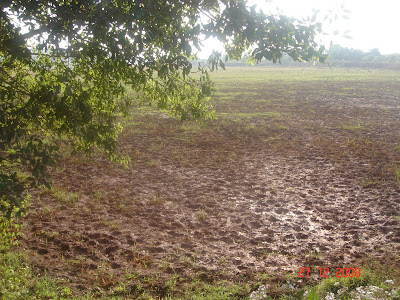When my office colleague and I were coming back to Delhi in October 2008, we received an SOS message from an activist sent secretly from the prison, informing us that ten of them had been arrested for anti-mining activities and had been put in Quepem prison.
Obviously panicked, we ran helter-skelter in various train compartments trying to get hold of a laptop so that we could draft an appeal for release of these activists, who were not allowed any communication with the outside world, not at that time at least. We also felt equally responsible (and somewhat guilty) for our team’s recent anti-mining activism/visibility that landed them in prison.
It seems to be a hilarious encounter in retrospect but in our anxiety, we nearly snatched a laptop from a group of young boys seated few compartments away from ours, who were dazed with fun-in-Goa or feni or both, who probably had no interest in anti-mining movement anywhere in the world. We must have come across as two (hyper) activists, who pleaded with strangers for their laptop, backed with an impromptu, emphatic lecture on rights of peaceful anti-mining protestors, which could get violated if ‘they delayed’ giving us their laptop. The boys easily parted with their computer-games and music, totally empathizing with the ten arrested, who were completely unknown to them initially, though not anymore.
After taking charge of the machine, we typed out appeals to the CM, President, Governor of Goa and the media, informing the world about arrests (and probable torture) of peaceful protestors. Neither of us had ever imagined that had we stayed on a day longer, we could have been jailed too! (http://mandgoa.blogspot.com/2008/10/demanding-immediate-release-of-ten-anti.html). It was a Sunday the next day but Quepem police station received so many angry phone calls from everywhere that they released all ten activists immediately. Mission accomplished!
However, the second time round, I came to Goa on my own, banking on Mandgoa group again, still willing to move around and participate in anti-mining struggles, especially along with people who lived in the mining belt, facing direct brunt of the mining industry. A visit to Pissurlem, Paira and Sirigao mines was planned. There are few observations that fit all three mining sites, for instance, trees and shrubs should ideally look some shade of green but here, in the mining belt, the foliage looks a dusty red colour.
Not only natural greens look dusty, even the roads look reddish-brown because of large quantities of accumulated dust that uncovered trucks release in the air as they move about freely at all hours of the day. In fact, one of the main occupations of women living in mining belts is of sweeping mining dust off roads, while men tend to become truck drivers, transporting ore from one part of the state to another for a livelihood.
Families actually live in the mining belt, breathing in huge quantities of mining dust as if it were oxygen. While driving down the main road itself, one can see a whole Pissurlem village bustling with activity- children in schools (photo below), people crouching at bus stops or queuing in temples, most probably oblivious to the poison around them. Respiratory diseases like TB are quite common amongst people living in the mining region. Many wells in the region have no water at all or the water available is unfit for consumption.
Well water unfit for consumption
This lake used to feed the all the paddy fields earlier, not anymore. It has stagnated and fields have become infertile because of large mining silt deposits due to mining activity close-by.
Mining in the vicinity of Pissurlem has destroyed paddy fields and water bodies. Many coconut trees have no coconuts or even branches due to exposure to extreme pollution of soil and water.


There are some mine owners also who have houses in Pissurlem, whose houses can be recognised by their flashy cars parked outside. It also reflects, to an extent, the profit margins in mining business.
A family we interviewed at Pissurlem. Also in the photograph is a researcher from the Human Rights Law Network, New Zealand
Red hills on top are mining deposits by Dempos/Vedanta in Mayem forests
Paira hill and river (Bicholim) are used for dumping mining waste/silt, harming both irreversibly. See a dying tree and a lonely bird perched on it.
We travelled to Sirigao Village (Bicholim) and photographed the mining pits up-close. Gigantic machines dug the mountain deeper so that a large number of trucks could keep travelling down the pit and come out carrying expensive ore. There was only one truck in sight that sprayed water to settle dust released by uncovered ore trucks. Dirty water used during extraction was also being let out in rivers that ran into villages, polluting them big time. Also, a partly infertile field with mining silt deposits can be seen in the last photograph.
For more photos, click here.
























No comments:
Post a Comment